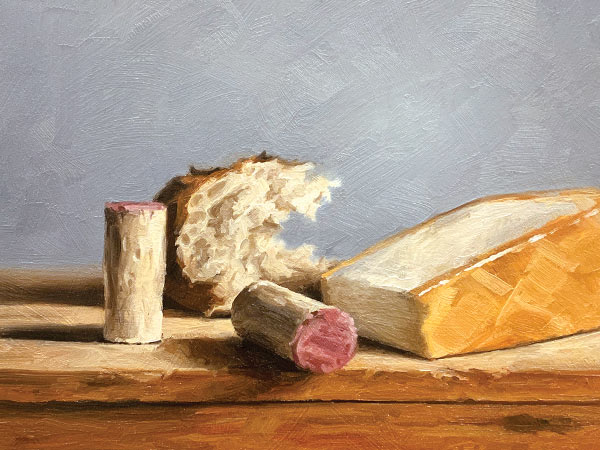Subtotal: $
Checkout-

Readers Respond: Issue 20
-

Family and Friends: Issue 20
-

Streams in the Desert
-

The Boy and the Bull
-

This Is My Body
-

The Greatest Thing Since Sliced Bread
-

The Ground of Hospitality
-

Beating the Big Dry
-

Cows and Elephants
-

At the Welcome Table I
-

At the Welcome Table II
-

Love Is Work
-

How Shall We Farm?
-

Why Yemen Starves
-

Digging Deeper: Issue 20
-

Cloth and Cup
-

Level
-

Editors’ Picks Issue 20
-

The Necessity of Reverence
-

A Book to End All Walls
-

Edna Lewis
-

The Dead Breed Beauty
-

Table Fellowship
-

Covering the Cover: The Welcome Table
-

Restoring a Creek
-

What I Stand For Is What I Stand On
-

Feasting in Kurdistan
-

The Birthday Party at the End of the World

Food is the great passion of our age. Whether intended to confer status, health, or pleasure, what’s on the table holds the same exalted place in today’s culture that art did in the Renaissance. Alice Waters is our Leonardo, Daniel Boulud our Raphael, Anthony Bourdain our Caravaggio. Food writing, a genre that barely mattered two decades ago, now does much to prop up the bottom line of media companies. Eight in ten American adults watch cooking shows.
This isn’t necessarily bad. While food as art is easy to ridicule, it’s a good thing when people rediscover the homey crafts of raising, preparing, and serving stuff to eat. The farm-to-table movement has brought renewed concern for the health of farms and of the natural world. Food writers such as Jonathan Gold of the Los Angeles Times have taught those with disposable money to cherish local diners and traditional immigrant cuisines – and perhaps even to get to know a truck driver or an immigrant in the process.

Michael Naples, Bread, Corks and Cheese Image by Michael Naples. Used by permission.
All the same, there’s something fake about our culture’s Instagram-fueled obsession with food. The intimacy it promises – with traditional ways of eating and living, with the crafts of butcher and baker, with the land and the soil – is counterfeit, a slickly marketed feeling of rootedness. The same consumer capitalism that has pushed the family farm to near-extinction and is engineering a mass exodus of the young from rural communities is quick to co-opt localist and fair-trade slogans. In coming decades, most farm families will likely be replaced by agricultural conglomerates with fleets of driverless tractors. Already now the toll is tragic: the high suicide rate among India’s farmers rightly draws outrage, and even in the United States farmers take their own lives at twice the rate of military veterans.
Every meal, if shared generously and with radical hospitality, is a taste of the feast to come.
This issue of Plough traces the connections between farm and food, between humus and human. According to the first book of the Bible, tending the earth was humankind’s first task: “The Lord God planted a garden in Eden, in the east; and there he put the man whom he had formed” (Gen. 2:8). The desire to get one’s hands dirty raising one’s own food, then, doesn’t just come from modern romanticism, but is built into human nature. For better or worse, food – how it’s grown, how it’s shared – makes us who we are.
“I’m gonna sit at the welcome table,” proclaims a spiritual first sung by enslaved African-Americans. The song refers to the Bible’s closing scene, the wedding feast of the Lamb described in the Book of Revelation, to which every race, tribe, and tongue are invited. To those who composed the song, the welcome table must have seemed a remote dream. But it was also a promise – a divine pledge of a day of freedom and freely shared plenty, of earth renewed and humanity restored.
In the case of food, the symbol is the substance. Every meal, if shared generously and with radical hospitality, is already now a taste of the feast to come.
Already a subscriber? Sign in
Try 3 months of unlimited access. Start your FREE TRIAL today. Cancel anytime.






































